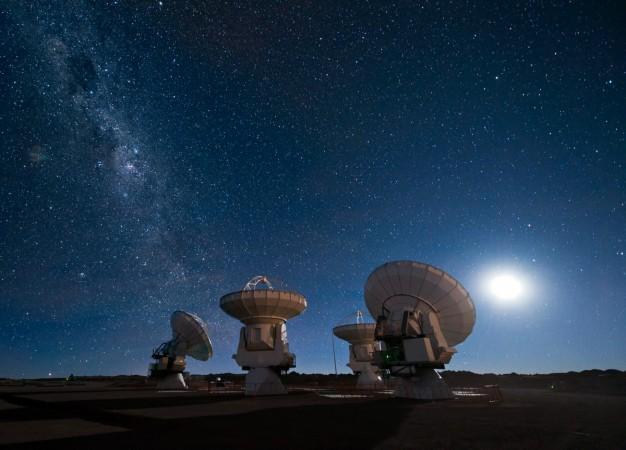
The cryptocurrency mining craze has resulted in a global shortage of graphics processing units (GPUs), which has significantly increased the price of these chips. Among many who are livid at the lack of GPU supply are scientists who have been constantly trying to find out if aliens exist.
In their quest to find celestial life, Search for Extraterrestrial Intelligence (SETI) researchers now want to expand their operations at two more observatories. But the shortage of key computer chips has stalled their plans, and they are blaming cryptocurrency miners for their ruined dreams.
"We'd like to use the latest GPUs... and we can't get 'em," SETI chief scientist Dan Werthimer told BBC. "That's limiting our search for extra-terrestrials... This is a new problem, it's only happened on orders we've been trying to make in the last couple of months."
Mining cryptocurrencies requires connecting computers to a global network as well as the processing power of GPUs to solve complex mathematical puzzles. When such math problems are solved, the miners receive a small cryptocurrency payment as a reward.
Like the so-called cryptocurrency miners, SETI researchers also need to use the powerful processors to listen for numerous communications frequencies at once so they don't miss any potential call.
"At SETI we want to look at as many frequency channels as we possibly can because we don't know what frequency ET will be broadcasting on and we want to look for lots of different signal types - is it AM or FM, what communication are they using?" Werthimer said. "That takes a lot of computing power."
SETI researchers are not the only alien hunters who have been affected. Astronomers at the University of California at Berkeley, who wanted to expand their GPU capability at their telescope lab, were recently surprised to find that the cost of the hardware they wanted had doubled.

The cryptocurrency mining craze has gained more popularity over the last few months thanks in part to a recent surge in the price of cryptocurrencies like bitcoin and Ethereum. Although there are specialized chips called "Asic" to support mining of digital currencies, miners still use GPUs for the purpose.
"[You can] use GPUs effectively to turn a small profit, you're not going to make millions but if you put 12 or 24 GPUs together, you'll make back the cost in six months," Matthew Hickey, a cyber-security expert at Hacker House, told BBC.
So, the cryptocurrency miners will likely to continue to harness the great processing power of GPUs. While companies like AMD and NVIDIA recently announced graphics cards specifically designed for cryptocurrency mining, it's yet to be seen whether such moves will make it easier for everyone to own high-performing GPUs.









!['Had denied Housefull franchise as they wanted me to wear a bikini': Tia Bajpai on turning down bold scripts [Exclusive]](https://data1.ibtimes.co.in/en/full/806605/had-denied-housefull-franchise-they-wanted-me-wear-bikini-tia-bajpai-turning-down-bold.png?w=220&h=138)



